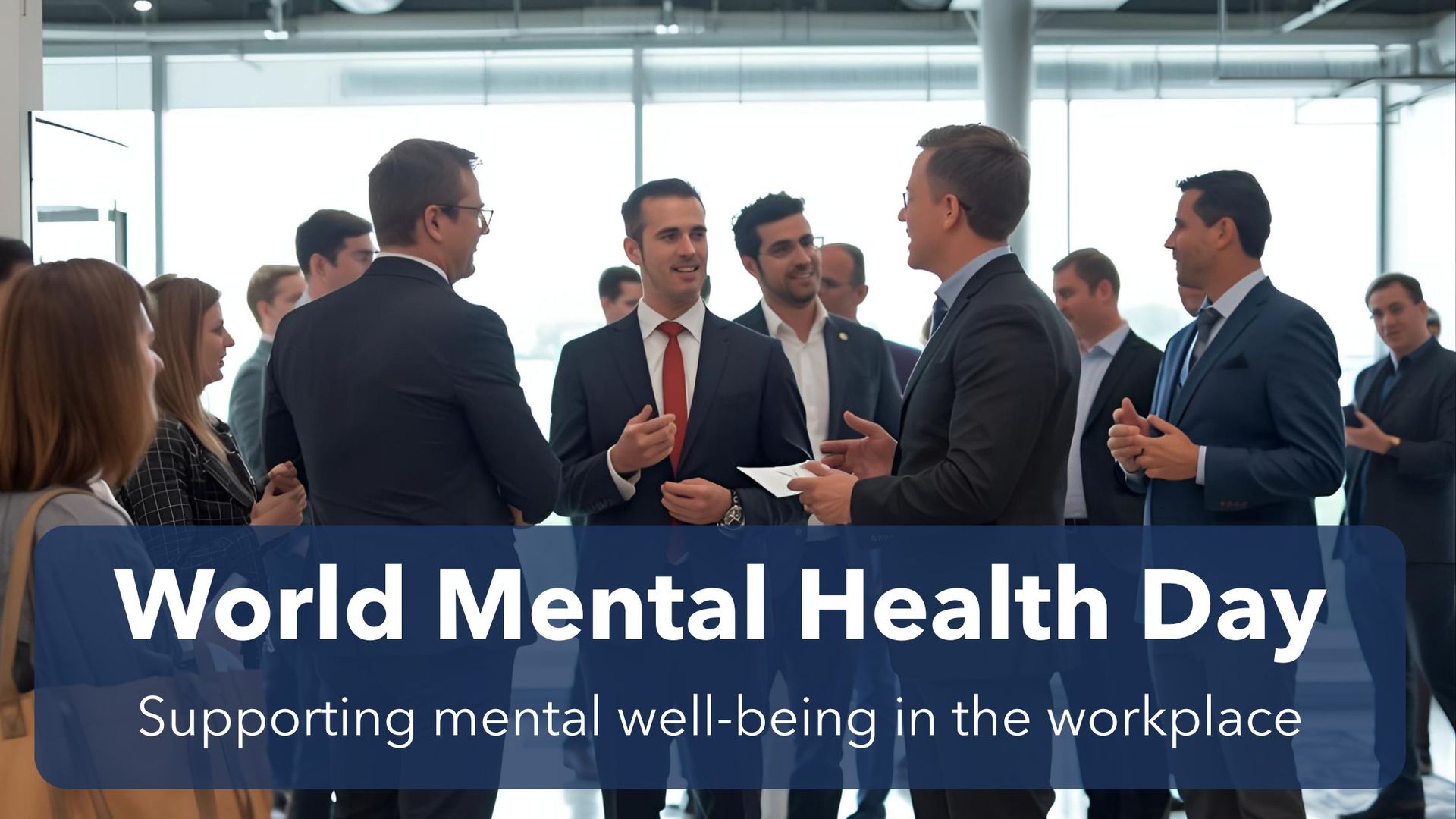
Supporting Employee Well-Being: How HR Plays a Role in World Mental Health Day
Each year on October 10th we commemorate World Mental Health day. A day dedicated to raising awareness, minimize stigma, and promote meaningful connections and conversations about mental well-being. In the modern fast-paced and high-pressured working world, mental health support comes as a crucial element beyond a wellness initiative. It helps to build a more resilient, compassionate, and productive workplace.
For HR professionals this day is an important reminder in the role we play in creating a culture that prioritizes empathy, balance, and care. When employees are mentally supported, they are more engaged, collaborative, and better equipped to excel in their roles.
Why Mental Well-Being Matters
Mental health can affect anyone, regardless of position, age, industry, or experience. The World Health Organization (WHO) reported that in 2019, 970 million people globally battled mental health issues. Anxiety and depression being the most common disorders. The economic costs become substantial, with loss in productivity outstripping direct cost of care.
Beyond numbers, the impact can ripple through teams and affect morale. Stress, burnout, and disengagement have real, impactful consequences. Acknowledging mental health and proactively making efforts to take care of employees strengthens companies as a whole.
How Can Employers Support Employee Mental Health?
While there is no “cookie cutter” formula to promote mental wellness – creating an environment where employees feel seen, heard, and supported is key. Here are a few actions HR can implement to make an impact:
- Foster Open Conversations
Break the silence. Openly encouraging judgement-free conversations around mental health can reduce the stigma around the topic. Practicing empathy and sharing personal experiences can encourage others to also discuss their own experiences and current challenges.
- Access to Mental Health Resources
Ensure employees know where they can turn to for help. Having an Employee Assistance Program (EAP) with access to counseling, therapy, or mental-health hotlines and online support tools can increase awareness and better access to resources that can help employees whom are struggling with their mental health.
HR can also work with benefits providers to increase coverage for mental health services or host workshops that focus on stress management and mindfulness as well as recognizing signs of burnout or emotional distress.
Creating an environment within the workplace that promotes these habits also is important. Having quiet spaces to decompress, offering mental health days, or acknowledging small employee achievements can go a long way.
- Work-Life Balance
Having a balance between work and personal life is key in maintaining mental health. Encourage employees to set realistic goals and expectations, honour their time off, and model such balanced behaviour themselves. Flexible work schedules, options to work remotely, regular check-ins, and encouraging boundaries can help employees better manage their workload and reduce burnout.
Celebrating World Mental Health Day in the workplace
World Mental Health Day is a great opportunity to remind and emphasize an organization’s commitment to well-being. Here are a few ways HR can promote and celebrate the day:
- Host a wellness workshop: Invite a speaker or mental-health professional to talk about coping strategies or tools for mindfulness
- Coffee & Connection: Have an informal meeting where employees can share their own ways to de-stress and support one another
- Share Resources: Share educational material or mental health tips through internal communication channels
Closing Thoughts
Mental health shouldn’t just be a one-day topic. It’s a constant year-round commitment to help take care of ourselves. On this World Mental Health Day, we should reflect on how to make our own workplaces safer, fostering compassionate and stigma-free spaces for everyone.
As HR professionals we are in a key role to lead this change. We can advocate for open dialogue, sharing helpful resources, and nurturing an inclusive culture that values well-being just as much as performance. By working together, united we can create safer workplaces where employees can thrive both professionally and personally.
When people feel supported, everyone benefits.
Resources:
https://www.who.int/health-topics/mental-health#tab=tab_2
About the Author:
Rheya is a volunteer with the CPHR Alberta Social Media Committee, a young professional passionate about HR and creativity. With a Diploma and Bachelor's in Business Administration from SAIT, Rheya brings experience in project management, SEO, and social media. When not working, Rheya enjoys crocheting, writing a first novel, and binge-watching Harry Potter movies.
The views and opinions expressed in this blog post belong solely to the original author(s) and do not necessarily represent the views and opinions of CPHR Alberta.





